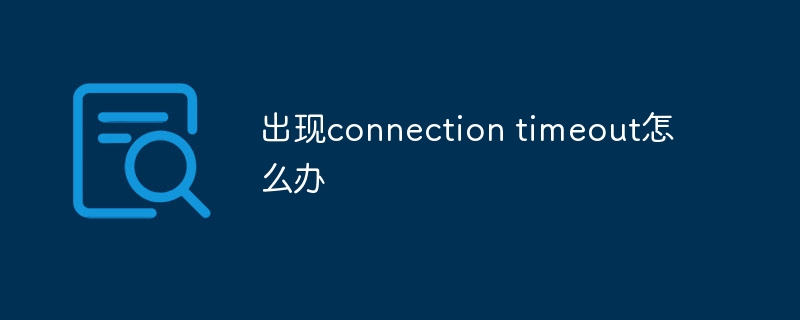
The reason for connection timeout is that the client cannot connect to the server within the specified time, which may be caused by network connection problems, server unavailability, client configuration problems, high concurrency, or program errors. Solutions include checking network connections, checking server status, adjusting timeouts, optimizing server performance, and finding program errors.

Causes and solutions for connection timeout occurrence
When connection timeout occurs, it indicates that the client is in the specified Unable to connect to the server within the time. This may be caused by a variety of reasons:
Cause:
Solution:
The above is the detailed content of What to do if connection timeout occurs. For more information, please follow other related articles on the PHP Chinese website!
 How to generate bin file with mdk
How to generate bin file with mdk
 html to txt
html to txt
 delete an element from js array
delete an element from js array
 What are the main differences between linux and windows
What are the main differences between linux and windows
 How to turn off windows security center
How to turn off windows security center
 How to deal with blocked file downloads in Windows 10
How to deal with blocked file downloads in Windows 10
 Domestic Bitcoin buying and selling platform
Domestic Bitcoin buying and selling platform
 How to implement jsp paging function
How to implement jsp paging function




